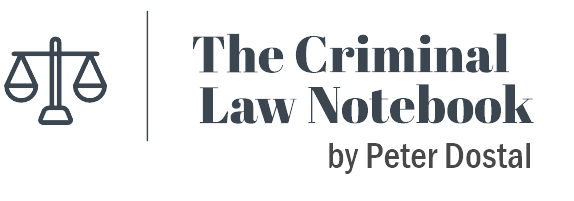Sentencing Brief (Generic): Difference between revisions
Created page with "{{HeaderTemplates}} ==Briefs== {{SentencingBriefStructure}} {|class="wikitable" style="width: 750px; background-color:white" {{SentencingBriefCoverPages1}} |- ! Body of Brie..." |
No edit summary |
||
| Line 57: | Line 57: | ||
<u>'''E. Totality and Concurrent vs Consecutive Sentences [assuming multiple offences charged]'''</u> | <u>'''E. Totality and Concurrent vs Consecutive Sentences [assuming multiple offences charged]'''</u> | ||
<Center><u>'''PART V: OBJECTIVES OF SENTENCING IN THIS CASE'''</u></center> | |||
<u>'''A. Purpose of Criminalization of Conduct'''</u> | |||
<u>'''B. | <u>'''B. Objectives to be Emphasized'''</u> | ||
<u>''' | <Center><u>'''PART VI: AGGRAVATING AND MITIGATING FACTORS OF THE CASE'''</u></center> | ||
<u>''' | <u>'''A. Gravity of Conduct'''</u> | ||
<u>''' | <u>'''A. Sophistication of the Offence'''</u> | ||
<u>'''B. Vulnerability of Victim'''</u> | |||
<u>'''C. '''</u> | |||
<u>'''B. Guilty Plea and Acceptance of Responsibility'''</u> | |||
<u>'''B. Prior Criminal Record and Repeat Offenders'''</u> | |||
<u>'''B. Prospects of Rehabilitation'''</u> | |||
<Center><u>'''PART VII: RELEVANT SENTENCING CASE LAW'''</u></center> | <Center><u>'''PART VII: RELEVANT SENTENCING CASE LAW'''</u></center> | ||
Revision as of 12:24, 14 March 2019
Briefs
A sentencing brief is structured as follows:
- Overview
- Identify the charges, including time, place and section of the code.
- Identify the issue for sentencing
- Outline desired result
- Facts
- Summary of undisputed Facts
- Summary of anticipated disputed facts, including what witnesses will be provided
- Enumeration of relevant exhibits
- Positions of Parties
- Principles of Sentencing
- Objectives to be emphasized in Case
- Applicable Factors
- Prior Cases
- Analysis / Discussion of Case
- Ancillary Orders
- Legal Requirements of Order
- Interpretation of Provisions
- Discussion of Application
- Summary of Party's Position
- Breakdown of the requested Sentence, including any factual
| Cover of Brief | ||||||||||||||||||||||||||||||||||||||||
|---|---|---|---|---|---|---|---|---|---|---|---|---|---|---|---|---|---|---|---|---|---|---|---|---|---|---|---|---|---|---|---|---|---|---|---|---|---|---|---|---|
|
C A N A D A File# ________________ IN THE [LEVEL OF COURT] OF [PROVINCE] BETWEEN: – and –
CROWN/ACCUSED SENTENCING BRIEF | ||||||||||||||||||||||||||||||||||||||||
| Table of Contents | ||||||||||||||||||||||||||||||||||||||||
|
TABLE OF CONTENTS(e)
| ||||||||||||||||||||||||||||||||||||||||
| Body of Brief | ||||||||||||||||||||||||||||||||||||||||
|
[X] On [date], the accused [plead/was found] guilty to the commission of the following offence(s) between [date]. Specifically that he:
The Crown elected to proceed by indictment/summary conviction on the hybrid offences. [X] It is the Crown/Defence position that a fit and proper sentence for the offences charged are as follows:
[X] The terms of the conditional sentence order should be as follows:
[X] The terms of the probation order should be as follows:
[X] The terms of the ancillary orders should be as follows:
[X] The parties are not in agreement on what the fit and proper sentence would be for this accused, including the appropriate form of disposition, duration of custody, the terms of probation, and ancillary orders. [X] The A. Purpose and Principles of Sentencing B. Proportionality C. Parity D. Restraint E. Totality and Concurrent vs Consecutive Sentences [assuming multiple offences charged] A. Purpose of Criminalization of Conduct B. Objectives to be Emphasized A. Gravity of Conduct A. Sophistication of the Offence
C. B. Guilty Plea and Acceptance of Responsibility B. Prior Criminal Record and Repeat Offenders B. Prospects of Rehabilitation
| ||||||||||||||||||||||||||||||||||||||||
| Table of Authorities | ||||||||||||||||||||||||||||||||||||||||
|
PART X: TABLE OF AUTHORITIES(e)
| ||||||||||||||||||||||||||||||||||||||||
